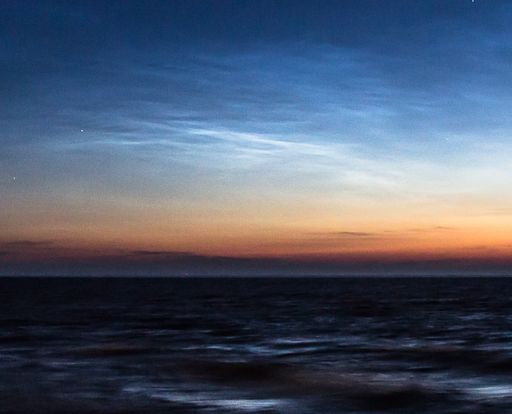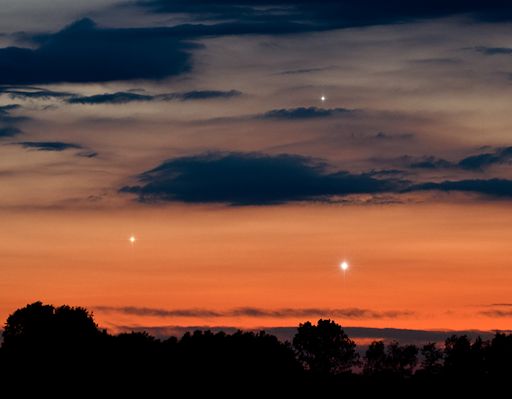When is the best time to see auroras? Where is the best place to go? And how do you photograph them? These questions and more are answered in a new book, Northern Lights - a Guide, by Pal Brekke & Fredrik Broms. | | |
ELECTRON STORM: In the past 24 hours, the flux of high-energy electrons swarming around Earth has increased more than tenfold. The source of this "electron storm" is a 700 km/s stream of solar wind buffeting Earth's magnetic field. NOAA cautions satellite operators that "satellite systems may experience significant charging" in response to accumulated electrons. SWx alerts: text, voice.
NOCTILUCENT CLOUD SEASON BEGINS: Over the weekend, sky watchers in northern Europe and Canada spotted electric-blue tendrils of light reaching out of the western sky at sunset. This signals the beginning of the 2013 season for noctilucent clouds (NLCs). Photographer Silvar Mehik sends this picture from the island of Saaremaa in Estonia:

NLCs are Earth's highest clouds. In the upper atmosphere, 80+ km high, tiny ice crystals nucleate around meteoroids and other aerosols. When the crystals catch the rays of the setting sun, they glow electric blue. For reasons that are not fully understood, these highest and coldest of clouds form during the warmest months on the ground--late spring and summer.
Noctilucent clouds first appeared in the 19th century after the eruption of super-volcano Krakatoa. At the time, people thoght the clouds were caused by the eruption, but long after Krakatoa's ash settled, the clouds remained. In those days, NLCs were a polar phenomenon confined mainly ro far-northern places such as Scandinavia or Alaska. In recent years they have intensified and spread with sightings as far south as Utah and Colorado. Could this be a sign of climate change? A NASA spacecraft named "AIM" is in orbit to investigate.
NEW! Daily images from AIM are now published here on Spaceweather.com. To find them, look in the left column of the home page and scroll down below the coronal holes.
High latitude sky watchers should be alert for NLCs in the evenings ahead. Observing tips: Look west 30 to 60 minutes after sunset when the sun has dipped 6o to 16o below the horizon. If you see luminous blue-white tendrils spreading across the sky, you've probably spotted a noctilucent cloud.
Realtime Noctilucent Cloud Photo Gallery
[previous years: 2003, 2004, 2005, 2006, 2007, 2008, 2009, 2011]
SUNSET PLANET SHOW: Last night, Venus, Jupiter and Mercury converged to form a bright triangle in the sunset sky. "It was an absolutely amazing sunset planet show," says Marek Nikodem, who photographed the apparition from Szubin, Poland:

At closest approach, the three planets fit inside a circle less than 3o wide. It was a rare event. There won't be another triple conjunction this tight until 2026.
However, the show's not over. The triangle will stretch and eventually break apart in the nights ahead--and the contortions are worth watching. Keep an eye on the sunset sky all week long. NASA: video, full story.
Realtime Planet Photo Gallery
Realtime Space Weather Photo Gallery
Realtime Aurora Photo Gallery
Realtime Comet Photo Gallery

